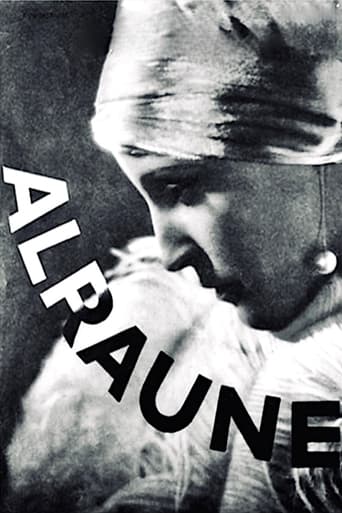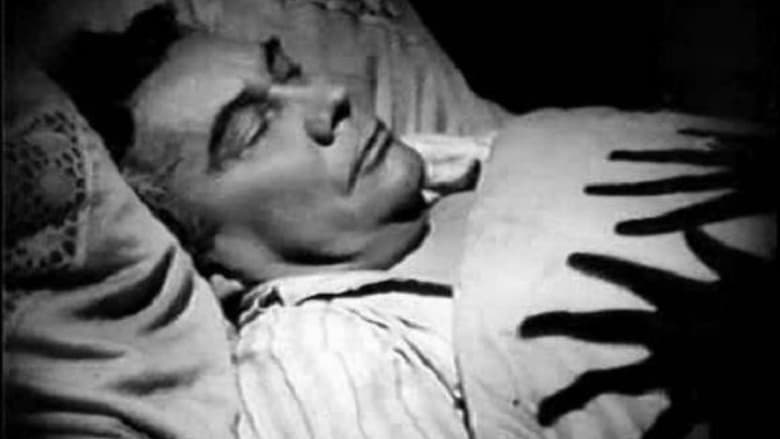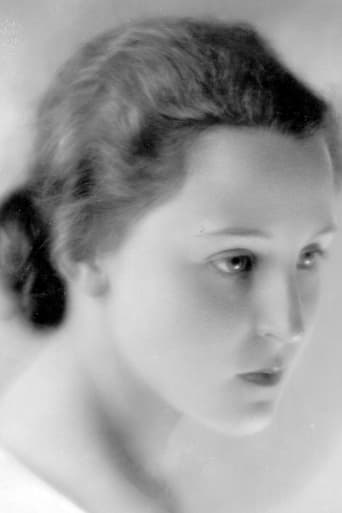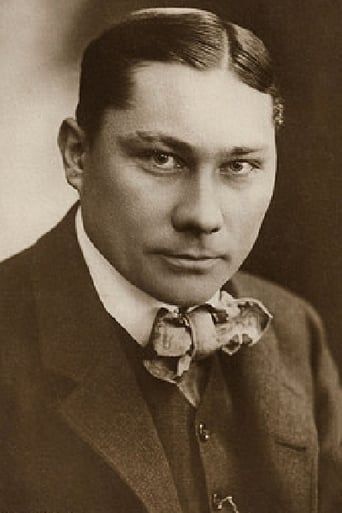

A Daughter Of Destiny (1928)
Hanns Heinz Ewers' grim science-fiction novel Alraune has already been filmed twice when this version was assembled in 1928. In another of his "mad doctor" roles, Paul Wegener plays Professor Brinken, sociopathic scientist who combines the genes of an executed murderer with those of a prostitute. The result is a beautiful young woman named Alraune (Brigitte Helm), who is incapable of feeling any real emotions -- least of all guilt or regret. Upon attaining adulthood, Alraune sets about to seduce and destroy every male who crosses her path. Ultimately, Professor Brinken is hoist on his own petard when he falls hopelessly in love with Alraune himself. Alraune was remade in 1930, with Brigitte Helm repeating her role, and again in 1951, with Hildegarde Knef as the "heroine" and Erich von Stroheim as her misguided mentor.
Watch Trailer
Cast


Reviews
The Worst Film Ever
Through painfully honest and emotional moments, the movie becomes irresistibly relatable
It's simply great fun, a winsome film and an occasionally over-the-top luxury fantasy that never flags.
It is neither dumb nor smart enough to be fun, and spends way too much time with its boring human characters.
Two monsters meet in this second adaptation of Hanns Heinz Ewers' novel: Paul Weneger, actor and director of "Der Golem" (1920), and Brigitte Helm, diva of Fritz Lang's masterpiece "Metropolis" (1927). Classified as science fiction and horror, the film was more of a fantasy to me. A scientist decides to inseminate a prostitute with a mandrake root that grew thanks to the semen of a murderer who was hanged on a tree. In the first scene, we learn that it is a full moon night and that someone will dig directly under the hanged man's body to remove the root. It will be used for the experiment. The result will be a living creature: Alraune. The film (or the copy I saw) makes a discreet ellipsis when the prostitute enters the scientist's experiment room, and in the next scene, we see young Alraune (mandrake, in German) in a boarding school ruled by nuns, from which she will escape with the scientist's worthless nephew. In the story that continues, there is no science fiction or terror, but the drama of a woman who ignores her origin. Her attempts to love and live freely are frustrated every time her "father" intrudes. He is convinced that Alraune has inherited anti-social traits from her prostitute mother and murderous father. However, what Alraune really wants is to enjoy life: she escapes with a magician to a circus, flirts with the animal trainer and meets a good viscount who falls for her and proposes marriage. But papa scientist does not give up, so she decides to take revenge.Brigitte Helm, who, as in "Metropolis", alternates between innocent sweetness and malicious eroticism, contributes to the fascination of the story. Director Henrik Galeen uses expressionist images, although the realistic approach predominates. It is a pity that the restored version is not available and what circulates is a vile copy of a VHS edition in English, with music often out of place and with the name of the protagonist changed to Mandrake. However, curiosity is curiosity and there is no one who can beat our archaeological passion for cinema.
Paul "The Golem" Wegener creates Brigitte "Metropolis" Helm from the sperm of a condemned man and the egg of a prostitute to disprove genetic theory and names her Mandrake after a plant that grows beneath the gallows and brings either very good or very bad luck. She's raised in a convent where she drowns flies, puts spiders in the nuns' habits, and demands a smitten young swain steal money from his father's bank so they can run off together. He does, they do -and soon join a circus where every man is at Mandrake's feet. Her "father" eventually finds her, brings her home, and introduces the girl into society where she has the same devastating effect on anything in pants ...including her creator. Uh oh.A great tale (based on German legend) with plenty of potential is told in pedestrian fashion (no Expressionism, here) and further diluted by a half-way happy ending (!) that has Mandrake falling in love and finding happiness while "father" goes insane for tampering with things no mortal should. The artificial insemination angle would have been verboten in Hollywood at the time but Weimar Germany was most likely unfazed. The 1952 remake with Erich von Stroheim and Hildegarde Knef gave ALRAUNE the ending it cried out for.
Poison AngelBased on the medieval legend of the Mandrake, a root, which grew beneath the gallows from the semen of hanged men, Hanns Heinz Ewers novel Alraune was brought to the screen in 1928 by Ama-Film GmbH and director Henrik Galeen (The Student of Prague 1926, Nosferatu 1922 as screenwriter). Paul Wegener (The Golem 1920, The Magician 1926) stars as Professor Jakob ten Brinken, the "world famous authority on genetic cross-breeding", who implants a prostitute with the 'seed' of a hanged man in order to study the effects of environment over genetics on the offspring. The resulting child is Alraune, whom Brinken calls 'Mandrake', played by Brigitte Helm (Metropolis 1927, The Love of Jeanne Ney 1927). Alraune is raised in a convent, ignorant of her origins, believing Brinken is her father. Just as the Professor is convinced, his 'experiment' has overcome her genetic history she runs away with a boy and begins a life of troubled encounters with men. Helm is both innocent, alluring and at times intensely evil in this captivating performance of a lovely young girl, both attracted to and in conflict with the men in her life. As in the novel, which this film closely follows, the idea and understanding of love is unknown to Alraune. As she chats with a circus magician she shares her train compartment with, his real intentions unknown to Alraune, he entertains her with slight-of-hand tricks. He produces a live mouse that he places on her leg and it quickly crawls under her skirt as the girl calmly observes. " What? You are not afraid of mice? Little girl. You will make something of yourself." While the film was heavily censored in 1928, this surviving scene must have been, and remains today, tremendously provocative. Brinken eventually finds Alraune, living as a circus performer, just as she rebels against the magician's attempts to control her flirtations with another man. " Stop me if you can!" In one of the most electrifying scenes in all of Weimar Cinema, Alraune opens the door to the lion's cage now on the stage and steps in. As the curtain opens, the crowd reacts in utter horror while, outside the cage, circus performers furiously run in all directions. Alraune stands before several enormous lions she teased only moments earlier, completely motionless, as the camera cuts to a close-up of her penetrating eyes. Once they are away from the circus, Brinken determines to start a new life with the girl, but Alraune again plots to run away with another man. As she is leaving, she finds the Professor's diary and discovers the truth of her existence, "Where do I belong in society?" Alraune bitterly decides to stay with Brinken and seek her revenge, feeling unfit for the man she now loves. She tortures Brinken by constantly flirting with men. As her ultimate insult, Alraune, dressed from head to tow in shimmering silk, seduces Brinken, "Do you really think I haven't known all along that I am not your daughter?" She runs off, depriving him and the torture continues. Financially and morally destitute, Brinken confronts Alraune as she packs her bags to leave. In a harrowing scene, he chases her from room to room with a large knife. Just as her death seems imminent, Alraune is saved by her lover and Brinken is left to suffer "the hell of loneliness and insanity." An overlooked treasure, Alraune represents the height of silent film in the Weimar era. With the exception of early scenes featuring Alraune's 'mother' and the convent, the film is entirely occupied by men, surrounding Helm like the unnoticed setting of a luminous jewel.
ALRAUNE is another spectacular piece of early German cinema, surprisingly overlooked by film buffs and historians alike. The film is not "expressionist" in the way of CALIGARI or METROPOLIS, but fans of those films will enjoy it regardless.The plot (without spoilers) is creepy to begin with: a scientist (Paul Wegener) decides to experiment with humanity by creating a woman from the seed of a hanged man impregnated into a prostitute. Using two reprehensible creatures as parents, as well as artificial insemination (which is implied in the film, not stated as some articles on the film have indicated), the doctor aims to see if an individual's humanity is the product of nature or nurture.The woman he creates, called Alraune (although called "Mandrake" in the english title cards, a name ill-fitting the overtly feminine character) is played by Brigitte Helm. No better casting for this part could have been made at the time: Helm's performance here far surpasses that of her most famous film role (the robotrix from Fritz Lang's METROPOLIS) and (I feel) solidifies her position as top femme fatale of that era. Her sensuous, provocative movements, gestures, stares and sneers even outshine those of Marlene Deitrich in years to come. There are moments where Helm slips into the silliness that harms her role as Maria in METROPOLIS (flailing about wantonly), but these are kept to a minimum by the director.Paul Wegener, as the doctor, also proves to be an actor out of time. His performance would stand up to modern criticism, as it lacks the usual melodramatic facial manipulations or exaggerated movements of many silent film male stars. Rather, Wegener tells us his characters thoughts and feeling swith subtle glances, almost imperceptible lip movements, and ingenius body posture. Wegener, you may recall, played the great clay giant Der Golem in his film of the same name; to see Wegener play this role, sans makeup and gravitas, is to understand the strength of his abilities.Overall the film is very good, although suffers from an ending not in keeping with all that builds up to it. A seduction scene between father and "daughter" is outrageous even by today's standards. But Alraune/Mandrake is presented as almost soulless, and this is much diluted by the end, although not truly explained. Was it nurture after all? Possibly, but the doctor's role in Alraune's maturation is almost nonexistent (she is raised in a girl's school, and spends the rest of the time running away from "father.") The film fails to answer the questions is presents. However, this may be one of the few negative symptoms of German silent films, which seem to universally fall apart at the resolution, backing away from the horrors they presented throughout.I am not sure if the version currently available on video is complete, but seems to soft-pedal the insemination issue (some viewers will think mandrake root was used as opposed to the hanged man's seed.) The title cards are few and far between, allowing the visuals to tell the story, not the dialog.For fans of the Frankenstein myth, Alraune presents another take on the tale of scientific hubris gone awry. An excellent film, it should be sought out in favor of the later (weaker) "Unholy Love" remakes.




